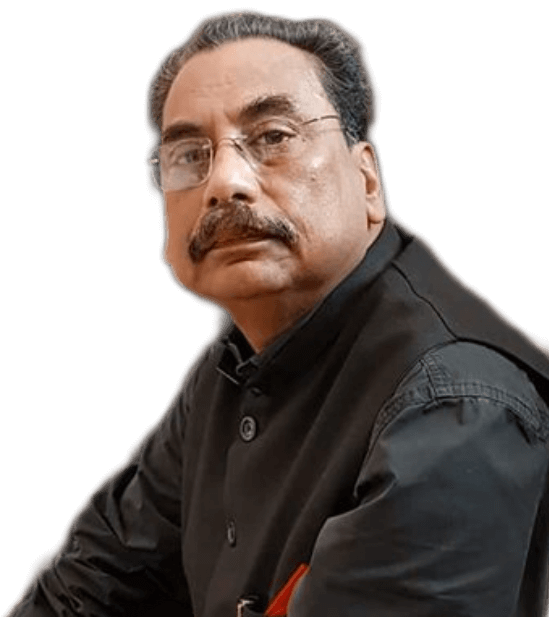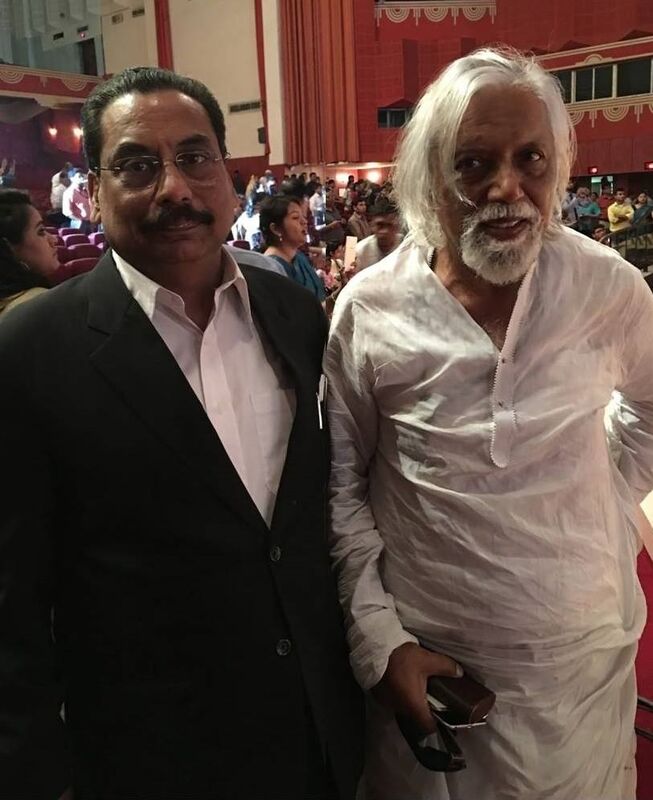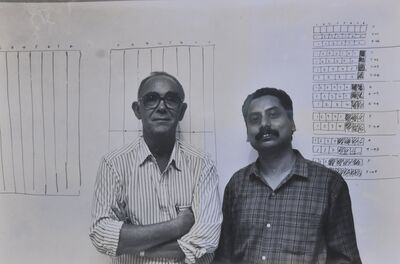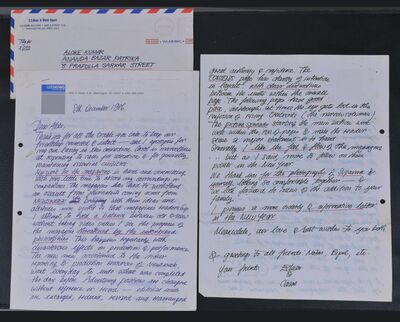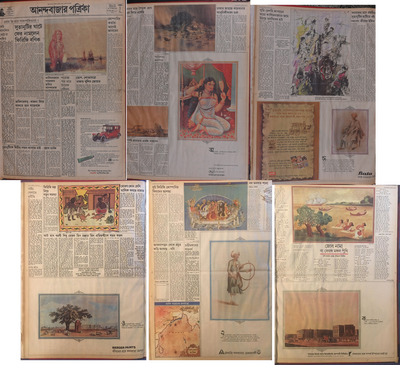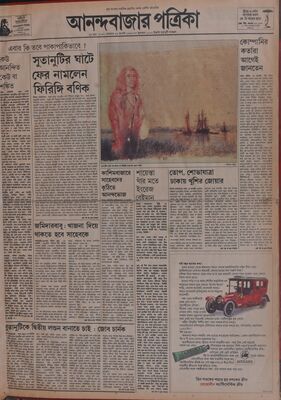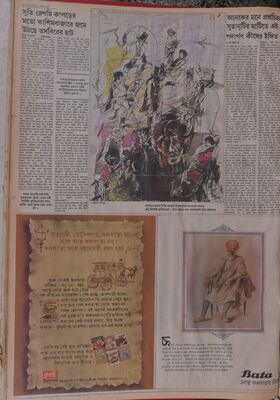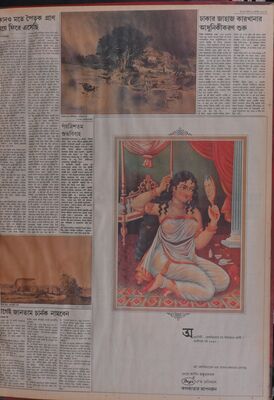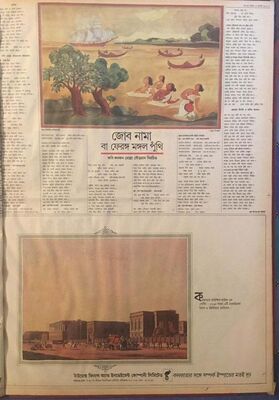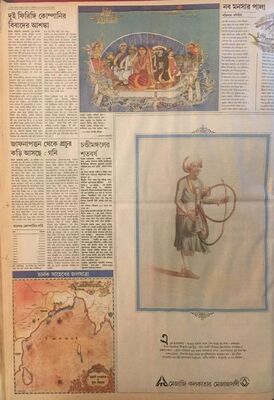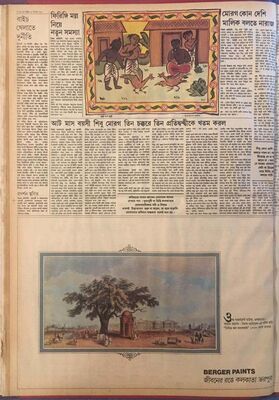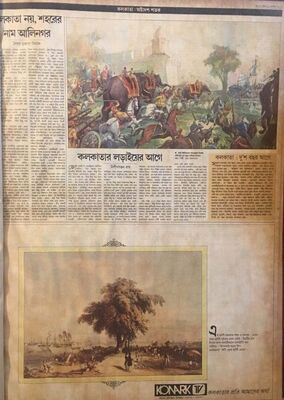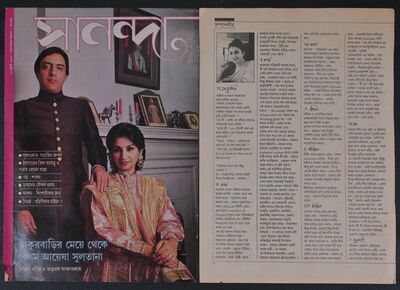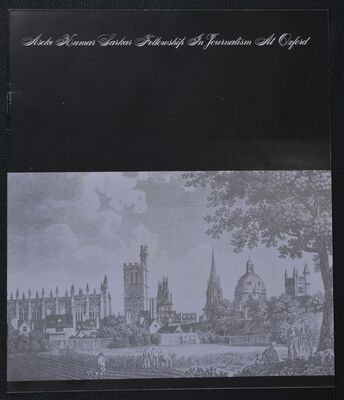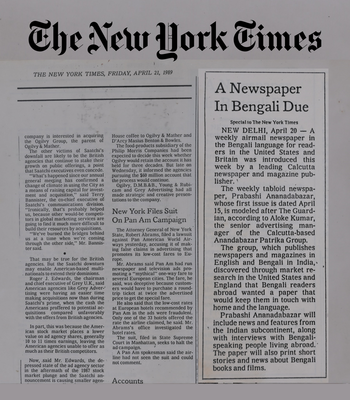From the day I joined Ananda Bazar Patrika Group on 1st. January 1980, there was a problem of alignment. No, not an alignment of Left or Right. An alignment of North and South. As in the Government Secretariat in New Delhi. I joined in the Newspaper Management under Arup Sarkar and as he was about to introduce me to his brother Aveek, the Chief Editor, pat came the reply, in-between the puff of the Davidoff Cigar, that he knew me. And there started the problem of alignment.
And that was absolutely right. My father, Nirmal Chandra Kumar, the antiquarian, had died and for a short period of time I tried best to look after his fiefdom of antique books. His obituary was published in Anandabazar Patrika and soon thereafter I got a call from the office of Aveek Sarkar to come and meet him. He did not wear a Dhoti Kurta then and was clad in a Safari suit smoking a cigar. He wanted to add to his collection rare books and prints and he appointed me as his antiquarian. In those days you appointed booksellers to build your library, a style adopted from the British. The Queen had a liberal list and Oxford Books and Stationers Calcutta was one of them, Sir Ashutosh Mukherjee had Cambray & Sons. Aveek Sarkar appointed Kumars. And such appointments are still flourished like a coat of arms.
Aveek Sarkar was very specific. Books on Calcutta: Doyle, Hogarth, Belenos, Solvyns. In fact he was not too fond of the Daniells , a collection which he had picked up, maybe from Foyles in London and requested me to dispose it off. When Ananda Bazar under the aegis of Aveek Sarkar planned the celebration of the tercentenary of Bengali printing with a massive Exhibition and Book Fair at the Maidan, his close confidant Nikhil Sarkar popularly known as Sri Pant informed me that Aveek Sarkar is ready to fund a book hunt across the continent to locate an original edition of Halhead’s Grammar printed in 1680 as this marked the beginning of Bengali Printing. That a copy of the book was traced in Calcutta, and ended my sojourn across continent in search of the book ended sadly. I would have loved to perform the task for Aveek Sarkar.
But these were earlier incidents before I joined. As soon as I took up my office I came to know of the launch of an English paper from the group and it was Aveek Sarkar who got me involved in the massive reader research that was being conducted by Mode under the guidance of Shiloo Chattopadyay and my ex-boss from Redifussion, Subhas Chakraborty. Immediately thereafter Aveek Sarkar wanted to get the paper designed by a person of repute and he chose Edwin Taylor his ex-colleague and mentor in London Times where he worked under the editor Harold Evans. The onus to orient Edwin to Calcutta, to get him acquainted with the many research findings and conducting of the workshops, to establish a stylus for the paper fell on me. And this nomination was from Aveek Sarkar. This was a big involvement with The Telegraph newspaper which ultimately made world history in publishing.
Between my joining in January 1981 to the launch of The Telegraph in June 1982 a period of two years I came to know the brothers. They were different as chalk and cheese. Arup Sarkar was a quintessential Bengali bhadrolok, a somewhat abridged version of his father, the doyen of the group. Having his roots in Bengali culture, very much rooted to its history, food and music. He always wears a Kurta with a Bengali version of the chorda, slightly lose. Aveek Sarkar wore a safari suit but gave up, the day he took his father’s seat as the Chief Editor of the group, to wear a dhoti kurta with diamond studded button and a shawl gently thrown over occasionally. A symbolism to the extent that he has mostly adorned himself in this attire expect when he plays tennis and golf and for a number of sojourns abroad like attending Wimbledon, when he wears suits tailored in Lahore. However the dhoti kurta hides much of his affinity to a western lifestyle and culture, including his love of the Davidoff Cigar, Campari and Bolivian coffee.
In 1990, to celebrate the tercentenary of Calcutta, Aveek Sarkar planned a very innovative paper. It would be a wrap –around of that day's news with a parallel paper designed in a way to impersonate the day of Job Charlock’s landing in Kolkata. So, as you opened the front page you will be treated to the news of Charnock’s landing with other topical news of the day in 1690. Aveek Sarkar refused to carry any general advertisement of 1990 and insisted on designer ads to go along with the make belief paper of 1690 so that it matched the theme. I was then in charge of Anandabazar and the task fell on me to convince the client to place advertisements which would have the look and feel of 1690, the greater part of which would be designed by the publication and would have a symbolic link to their brand and product. What a difficult task. But Aveek Sarkar’s confidence sailed me through like Charnock to the bank of river Hoogly.
I was more near to Aveek Sarkar in terms of world view and wider thought. I am yet to come across a mind so agile in terms of information and technology. The first apple desktop was in his ornate side table much before the world keyed in to computers. His knowledge of design carried from London Times under Harold Evans and Edwin Taylor gave way to a new modular design crafted and executed through his many art directors. Aveek Sarkar is one of those editors who can recognise a good front page or an interesting article and can explain why it works. He can write headlines to fit. Occasionally, though rare he might contribute an article, not one of those self-serving but one of purpose.
The brother Sarkar’s desired to create a seat at Oxford on Journalism dedicated to their father Ashok Kumar Sarkar. A task, which may be executed easily today but not then. It needed the permission of the Government of India, Department of Finance, then headed by Shri Pranab Mukherjee a huddle easily thought traversed with the immense influence of the ABP group but convincing Oxford was tough. Prasanta Sanyal then advisor to the group was looking after the project under Aveek Sarkar and a presentation was in order. It was again Aveek Sarkar who spoke to his brother to veto my induction to the team being sworn in secrecy like the masonic rites. The task of preparing a full-fledged presentation fit for the queen in king’s English is easy to envisage without a PPT in those days but difficult to execute.
Nicholas Coleridge in his book, The Paper Tigers predicted that the vision of Aveek Sarkar can take the sphere of ABP group to the entire eastern sea board of India and spreads further to Hong Kong and Singapore. Aveek Sarkar when asked which four publications in the world he would like to buy had listed: The New York Review of Books and the Economist for ego trip and The New York Times and the Time magazine as a professional decision. Yet, yet The Telegraph could not go beyond eastern India. This I strongly believe is not for the limitation of Aveek Sarkar, but the support he did not receive from my department, marketing. The head of the division did not have the vision nor shared the mission to launch it in other states, particularly New Delhi and India’s business capital Mumbai. It had to be launched within a year as the format started to be photocopied waning the marketing USP. The proverbial bus was missed. Once and for all.
The success of The Telegraph in the East however did embolden the group who wanted to foray into other publication. The focus was narrowed to a women’s magazine long on the drawing board of the eminent journalist and Editor Santosh Ghosh. Originally envisaged as something near to then Nabokollol for afternoon read by housewife the idea was resurrected for a launch. But the fuddy-duddy concept did not go with Aveek Sarkar and thus the responsibility was entrusted to me. First, the positioning had to be redefined. I coined the word ‘workwife’ to define the target group. Working wife. Not house not working. This paved the success of the magazine then edited by the film personality Aparna Sen. The Editor was kind to acknowledge my contribution and mentioned it in the first editorial in the maiden issue. The word since then has been included in the marketing lexicon.
It is Aveek Sarkar who brought Penguin to India in 1985. On creating Penguin India, the first thing he did was to get an editor of high calibre. He got David Davidar, a Harvard alumnus holding a diploma in publishing. Thereafter he set up a team to study the book market, particularly paperback in terms of stylus and to prepare a list of probable penguin authors. I was selected to be a part of this team. My work was in the realm of stylus, to rope in Arun Kale the art director from my previous job in Rediffussion to work on the cover design and to assist David, in whatever small help required getting the author list ready. The assignment related to cover design came in handy, much latter when the art department in ABP Calcutta started designing the covers.
After working for 15 years and looking after all the publications in the group and having the single distinction of working with more than 20 editors of repute I left ABP group as the Marketing Controller, to join Ambnuja Cement as the CEO to create a theme park. I built Swabhumi and during the period of planning Aveek Sarkar advised me on different aspect. During this time I came to know that he was influenced by Corbusier, the architect. Sarkar was the first in India to lay the grammar of a design influenced more by architecture and town planning then arts. Much of the design of Swabhumi is based on the design of a newspaper: headline, anchor, lead and pegging.
I did not lose much for my nonalignment. An attitude that does not associate or identify itself with any particular ideology or objective espoused by a particular group. It does not preclude involvement, but expresses the attitude of no pre-commitment to a particular state of mind before a situation arises.
But as my friends in media know, to survive in media, you need a godfather. I had none.
I had Aveek Sarkar who appreciated my talent. My work.
